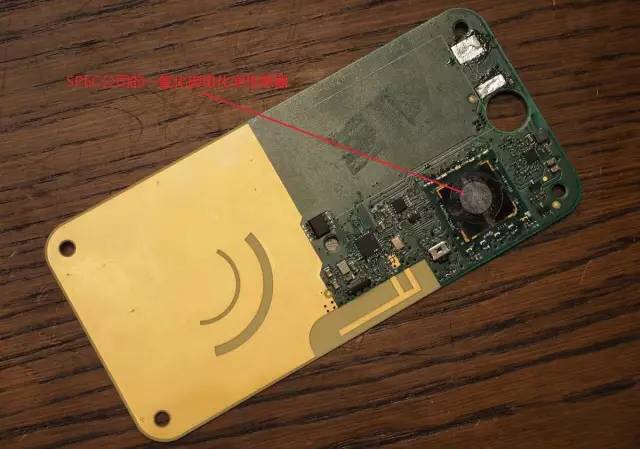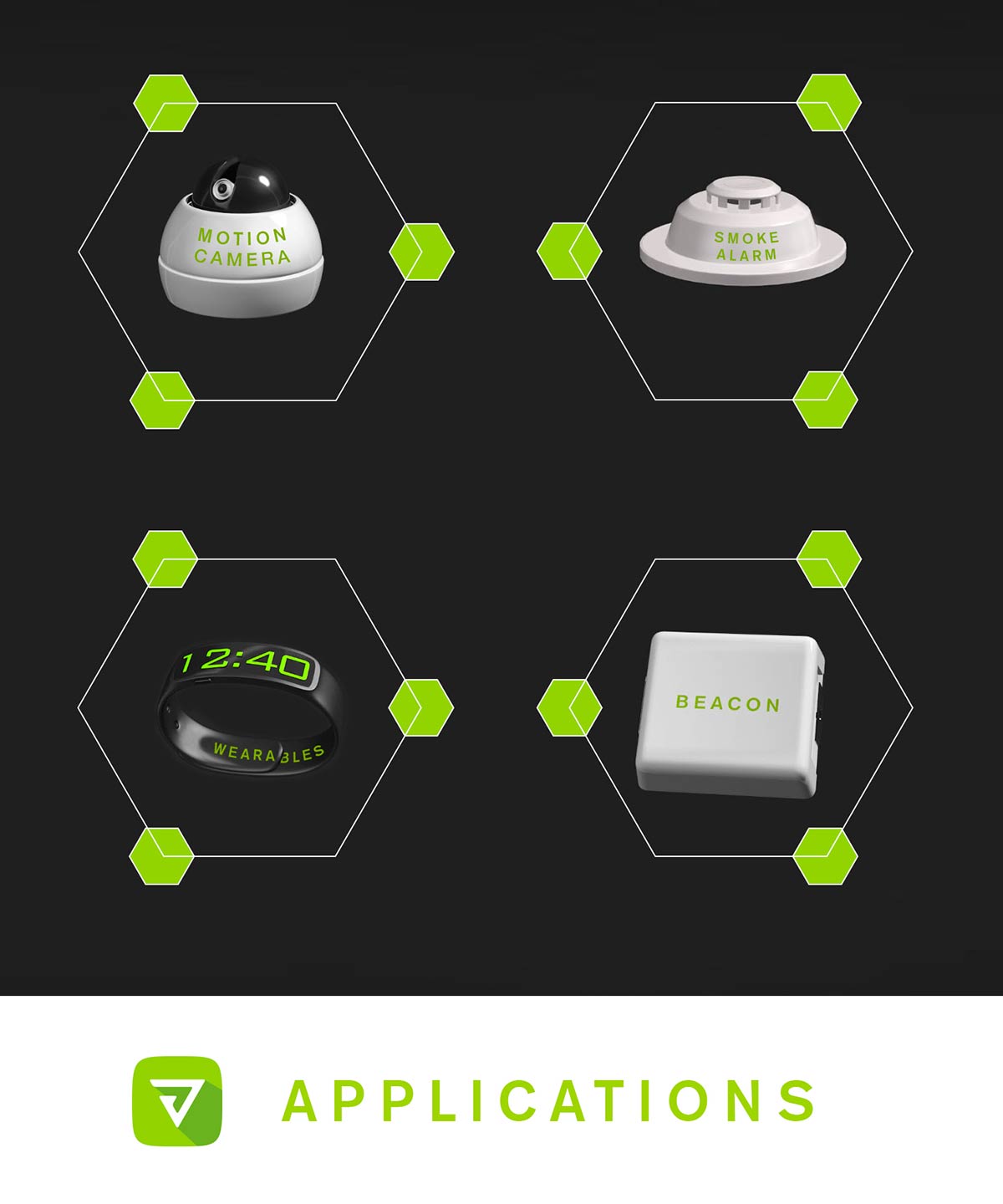Freevolt generates power from thin air 从空气中取电的Freevolt技术
blogger-avatarby Jamie Rigg | @jmerigg | September 30th 2015 At 2:26pm

What you see above may look like an unremarkable slice of electronics, but it
can theoretically power a low-energy device forever, and for free. If that sounds
like a big deal, well... that's because it is. Drayson Technologies today announced
Freevolt, a system that harvests energy from radio frequency (RF) signals bouncing
around in the ether and turns it into usable, "perpetual power." Drayson
isn't exactly a household name, but the research and development company has
a particular interest in energy, especially where all-electric racing is concerned.
And now it's developed the first commercial technology that literally creates
electricity out of thin air.
We're constantly surrounded by an ever-denser cloud of RF signals. They're
the reason your smartphone gets 2G, 3G and 4G coverage, your laptop gets WiFi,
and your TV receives digital broadcasts. Capturing energy from this background
noise is nothing new, but most proof-of-concept scenarios have employed dedicated
transmitters that power devices at short ranges. Furthermore, research into
the field has never really left the lab, though a company called Nikola Labs
is hoping to release an iPhone case that's said to extend battery life using
RF energy harvesting.
According to Drayson, Freevolt is the first commercially available technology
that powers devices using ambient RF energy, no dedicated transmitter required.
The key to Freevolt is said to be the efficiency of its three constituent parts.
A multi-band antenna scavenges RF energy from any source within the 0.5-5GHz
range, which is then fed through an "ultra-efficient" rectifier that
turns this energy into DC electricity. A power management module boosts, stores
and outputs this electricity -- and that's all there is to it.采集环境的RF能量,不需要专用的发射器.主要三部分,多频带的天线收集RF能量;进入整流器变成直流电;电源管理模块升压,保存然后输出这个电

Freevolt may well be the most efficient system of its kind, but it's still only
viable for devices that require very little power. In a location where lots
of RF signals are flying around, like in an office, a standard Freevolt unit
can produce around 100 microwatts of power. That's nowhere near enough to say,
run your smartphone, but Drayson has some specific use cases in mind. The company
thinks Freevolt can be the backbone of the connected home, and in a broader
sense, the internet of things. Sensor-based devices, such as a smart smoke alarm,
can be powered by Freevolt indefinitely. Beacons that provide indoor mapping
and targeted advertising are also perfect candidates.此技术产生100微瓦的功率,适合传感器设备比如烟温探测器,beacon等
While it's easy to visualize specific examples -- a smoke alarm that never
needs a new battery, or a low-power security camera that isn't bound to a mains
outlet -- the true potential of Freevolt is hard to grasp. We're talking about
free energy here: devices that never need charging, cost nothing to run, and
aren't limited by the location of an external power source. An entire smart
city -- where roads know when they're busy and bins know when they're full --
could be devised using countless sensors that require no upkeep, and have no
overheads beyond the price of the hardware itself. It's a powerful idea, and
beyond sensors, Drayson imagines Freevolt being used to trickle-charge all kinds
of hardware, significantly extending the battery life of a wearable, for instance.
What's more, Freevolt can be scaled up for applications that require higher
power outputs, and Drayson is currently working on miniaturizing its initial
reference design and creating a flexible version that can be integrated into
clothing, among other things. There are limitations to the technology, of course.
The amount of power Freevolt can harness depends on the density of ambient RF
signals, which are way more prevalent in urban areas than the countryside. A
sensor-based product could still operate in these lower-yield environments,
though, by monitoring a value every five minutes instead of every five seconds,
for example.
Drayson's business model involves selling licenses to Freevolt and its related
patents, as well as offering guidance and technical support to interested parties.
Development kits are also available to pre-order from today, so advanced tinkerers
can get their hands on the tech too. It might take some time before Freevolt
finds its way into products, as Drayson is relying primarily on other companies
to dream up and develop real-world applications. That said, Drayson has created
a consumer product of its very own that's powered solely by Freevolt: an air
pollution monitor called CleanSpace.
The CleanSpace Tag is a continuous carbon monoxide monitor that sends data
back to your smartphone via Bluetooth. From the companion app, you can see real-time
air pollution levels, and review your exposure during that day, recent weeks
and further. The app also keep tabs on your travels, encouraging you to build
up "CleanMiles" by walking and cycling rather than taking motorized
transport. These banked CleanMiles can then be exchanged for rewards provided
by partners such as Amazon, incentivizing you to travel in non-polluting ways.分享这些一氧化碳数据到云端获得亚马逊的奖励
Air pollution is of particular interest to Lord Drayson, chairman and CEO of
Drayson Technologies, who hopes to increase awareness of the invisible health
risk. But, there's also a bigger picture. The CleanSpace app uses data from
the 110 static sensors dotted around London to build a pollution map of the
capital. Each CleanSpace Tag also feeds anonymized data into this system, with
the idea being the more tags in the wild, the more locally relevant and robust
that UK pollution map can become. CleanSpace users can therefore decide on the
fly to avoid more polluted areas in favor of cleaner routes. The plan is to
expand the crowdsourced data concept elsewhere if it's well received, but for
now the CleanSpace Tag is only available in the UK through a crowdfunding campaign.
Pricing starts at £55 per tag, though you might want to buy one just to rip
it open and see the Freevolt backbone hidden inside.
BOM和空中取电的白皮书: 链接
此新闻的原文: 链接
需要此产品内置的传感器一氧化碳 3SP_CO_1000 请联系0755-82565851 邮件 dwin100@dwintech.com 手机156-2521-4151
其它Pin to Pin的气体传感器推荐:
2, 二氧化氮 3SP_NO2_20, 贴片&插针封装, 20*20*3.98mm
3, 硫化氢 3SP_H2S_50, 贴片&插针封装, 20*20*3.98mm
4, 二氧化硫 3SP_SO2_20, 贴片&插针封装, 20*20*3.98mm
5, 酒精浓度 3SP_ethanol_1000, 贴片&插针封装, 20*20*3.98mm
6, 臭氧 3SP_O3_20, 贴片&插针封装, 20*20*3.98mm
7, 多合一IAQ_100, 室内空气质量监测, 定性分析, 贴片&插针封装, 20*20*3.77
8, 多合一RESP_IRR_20, 人体呼吸有害气体监测, 定性分析, 贴片&插针封装, 20*20*3.77
9, 数字CO模块IOT_CO_1000, 数字输出, 内置校正算法, 即插即用, 44.5 x 20.8 x 8.9 mm
10, 数字NO2模块iOT_NO2_20
11, 数字SO2模块iOT_SO2_20
12, 数字O3模块iOT_O3_20
首页home 产品product 新品发布news 参考设计ref.d 联系contact 应用笔记app note
 D-Win Technology(HongKong) Co.,Ltd 深圳市南频科技有限公司
D-Win Technology(HongKong) Co.,Ltd 深圳市南频科技有限公司



 D-Win Technology(HongKong) Co.,Ltd 深圳市南频科技有限公司
D-Win Technology(HongKong) Co.,Ltd 深圳市南频科技有限公司